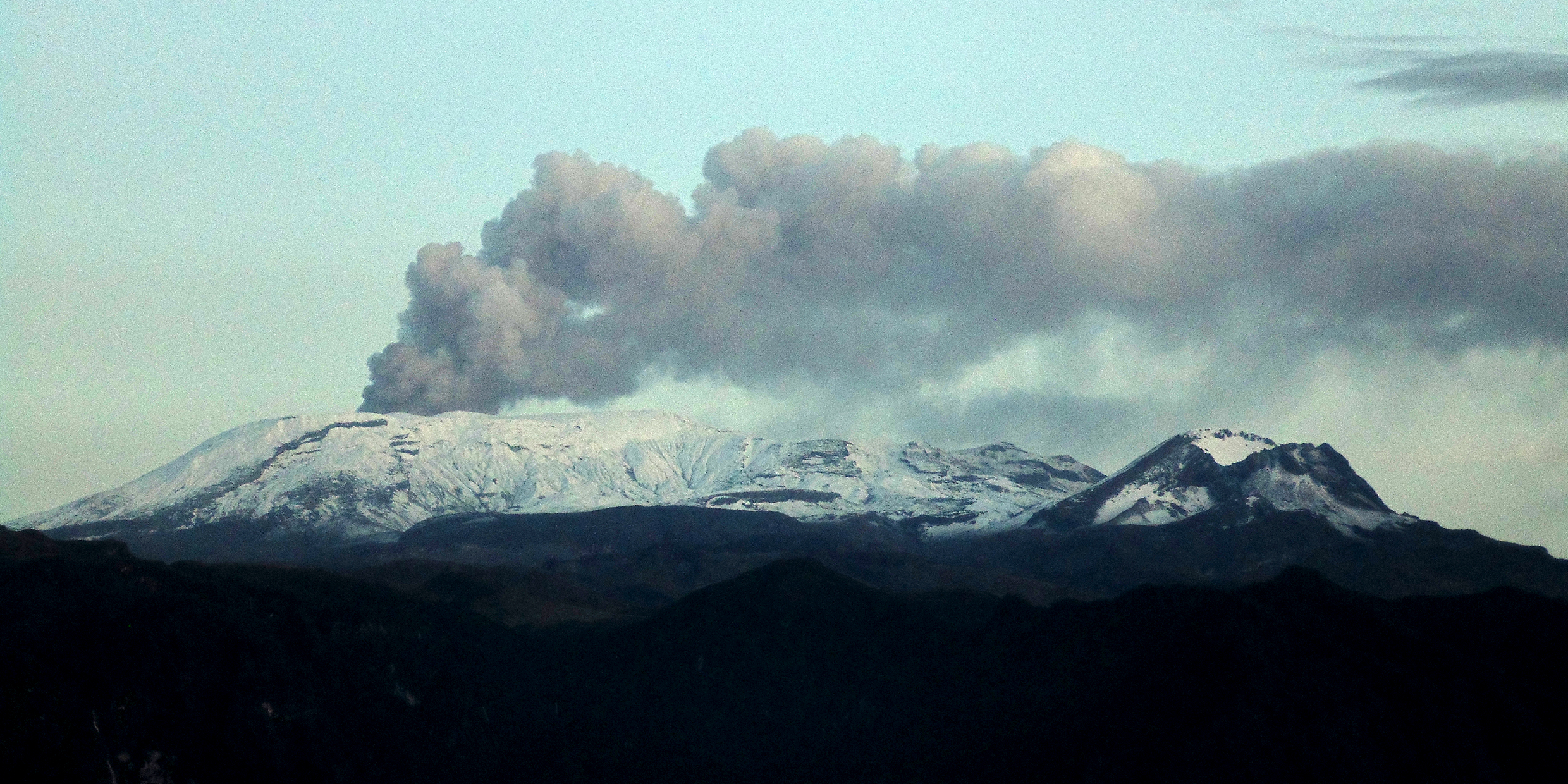Originally published 25 November 1985
For a year the mountain had been unquiet. Smoke, rumblings, and tremors signaled that pressure was building inside the peak. Then, on the evening of Wednesday, November 13, 1985, Nevado del Ruiz blew its top. The heat of ejected ash, steam, and lava melted part of the mountain’s cap of snow and ice. In the ensuing rivers of mud that poured down the mountain’s flanks more than 20,000 people lost their lives.
The eruption of the Colombian volcano, like the Mexican earthquake several weeks earlier, was a human calamity. But both events were predictable. Both were inevitable. And both will occur again.
A thin-skinned planet
We live on a dynamic planet. The cool, rigid crust of the Earth is as thin compared to the planet as the skin of a grape. Peel off the Earth’s rocky skin and you would find a sphere of hot, plastic, almost molten rock. The Earth under its skin is as hot as the bar of iron in a blacksmith’s forge. Peel off the Earth’s thin skin and the planet would glow in the night like a small red star.
And the material of the Earth’s interior is in motion. The almost molten rock moves in great convective loops — hotter rock rising, cooler rock sinking — churning like pudding in a pan. Perhaps “churning” is too strong a word. The red-hot rock under the crust moves at a snail’s pace of a few centimeters per year. On a human time scale it creeps, as iron slowly deforms under the pressure of the blacksmith’s hammer. But in the Earth’s own time — in geological time — it churns.
As the interior of the Earth churns, the crust moves and breaks. It is along the breaks that most geological activity occurs. One of the liveliest breaks in the Earth’s crust runs along the western coast of Central and South America. Along that coast the floor of the Pacific Ocean is being pushed down under the continents, back into the red-hot forge of the Earth. As the crust goes down, it bends and breaks and generates heat. All along the crack there will be earthquakes and volcanic eruptions. In human time, these will occur here and there, and now and then. But in the Earth’s own time the western coast of the Americas is a continuously shivering chain of fire.
Life on the cracks in the Earth’s crust (called “plate boundaries” by geologists) is inevitably risky. In any one place or in any single lifetime the chance may be small that a major disaster will occur. For example, the Ruiz volcano last erupted with catastrophic consequences in 1595, as Spanish conquistadors explored the area. Along the 4000-mile-long line of the Andes Mountains there are presently only a dozen or so active volcanoes. But sooner or later every place on a plate boundary will experience tragedy.
It is unlikely that humans will refrain from living on plate boundaries. Many of the world’s great cities lie on or near cracks in the Earth’s crust. Mexico City is removed from the active coast by more than 100 miles, but still it felt the shake of the descending crust. If humans will not avoid the cracks, then geologists must do whatever they can to predict imminent catastrophes. But most geologists would say that reliable prediction of earthquakes and volcanic eruptions is still decades away.
In Colombia, the mountain signaled the coming eruption. Earth tremors were felt as long ago as November of 1984, almost a full year before the eruption. In the following months, swarms of earthquakes of magnitude 3 or 4 on the Richter Scale shook the region. In September of 1985 there were heavy ash emissions and a small eruption that sent mud sliding 27 kilometers down a mountain valley. Smoke plumes were visible daily.
Geologists called in
The Colombian government did take notice. An international team of geologists began to closely monitor the mountain. Disaster plans were formulated. But no decisive action was taken.
There are those who say that the mountain gave fair warning, and that the huge loss of life was due to a human failure to act decisively on available information. But volcanoes are not that simple. The Arenal volcano that erupted with violence in Costa Rica in 1968 produced earth tremors for only a day before the eruption. The Mount St. Helens eruption was preceded by seven and a half weeks of quakes. Ruiz broadcast its intentions for almost a year. Clearly, it is impractical to evacuate entire communities in anticipation of a disaster that may be weeks or months in coming.
Geologists are working hard to refine their ability to give reliable warnings of imminent earthquakes and volcanic eruptions. But the dynamic Earth will not wait for their success. Those who live by choice or necessity on the cracks in the Earth’s crust must be prepared for the kinds of human tragedies we have witnessed in these past few weeks.
There have been several minor eruptions of Navado del Ruiz in the decades since this essay was first written, but thankfully none of the severity of the 1985 tragedy. ‑Ed.



